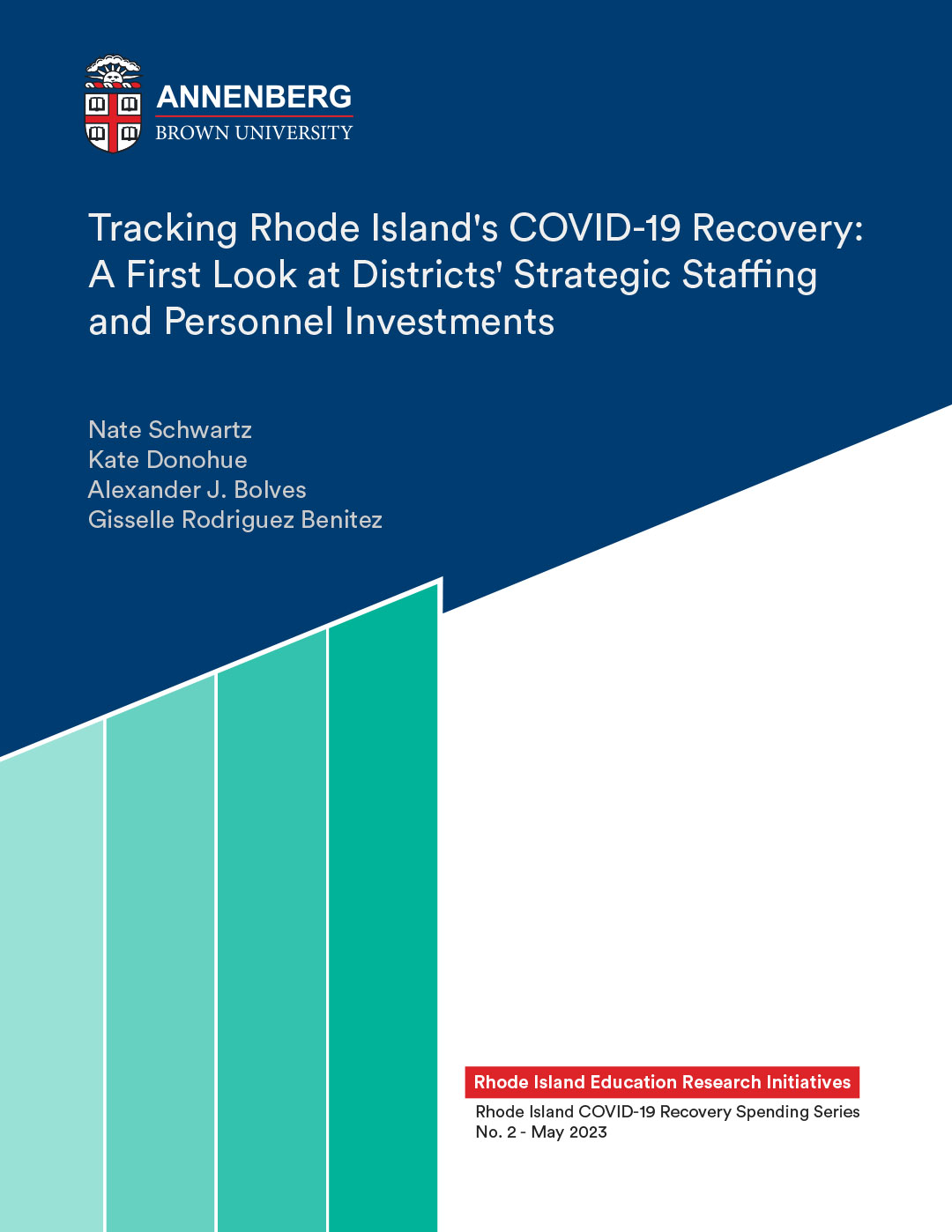Starting in May 2020, the Elementary and Secondary School Emergency Relief (ESSER) fund transferred billions of dollars through state departments and on to districts to support COVID-19 recovery efforts. The funding, which lasts through 2024, represents the largest one-time infusion of federal dollars ever provided to K-12 school districts and has the potential to reshape key elements of the educational system.
While several studies have examined district ESSER spending plans, this is the first analysis that we are aware of that explores the choices that districts in a single state have made as they spend the funds. Using line-item data from Rhode Island’s district accounting system alongside interviews with district leaders, we investigate overall spending patterns and expenditures in the largest budget categories – personnel, supplies and partners, technology, and operations and facilities.
As of June 2022, the latest date with complete spending information, Rhode Island districts had used $216 million, or about one-third of the total ESSER allocation, a spending rate that placed Rhode Island among the slowest spenders nationwide. If spending continues at the same rate as 2021-22, districts will reach only 65% of the total by the end of the grant period. However, spend rates have increased each year and spending data do not reflect the full set of obligations that districts have contracted but not yet invoiced, making it hard to tell at this stage how district spending will look as we reach the required deadline.
Within spending category, patterns diverge. Halfway through the grant period, only about one-third of budgeted dollars had been spent in the largest categories – personnel and partners/supplies – with much of the money put toward obligations that predated the pandemic, such as existing staff. In contrast, districts had spent about half of the funds budgeted toward technology and facilities on long-term upgrades. Nearly every school in the state is now set up for one-to-one computing and most districts invested in building infrastructure, updating HVAC systems and other health-related facility needs.
In this brief, we focus on dollars spent by traditional (non-charter) districts on staffing and personnel, by far the largest category of ESSER spending. Subsequent briefs will examine other spending areas in greater detail.
We find that ESSER staffing dollars have not yet created large-scale transformation across the state; staffing levels have stayed flat, with districts instead using large percentages of ESSER funds to pay for existing staff. At the same time, the funds have allowed staff members in some districts to take on significant additional responsibilities and additional professional development opportunities, they have funded substitute teacher time and, in some places, they have paid for additional contract workers such as tutors and therapists.
